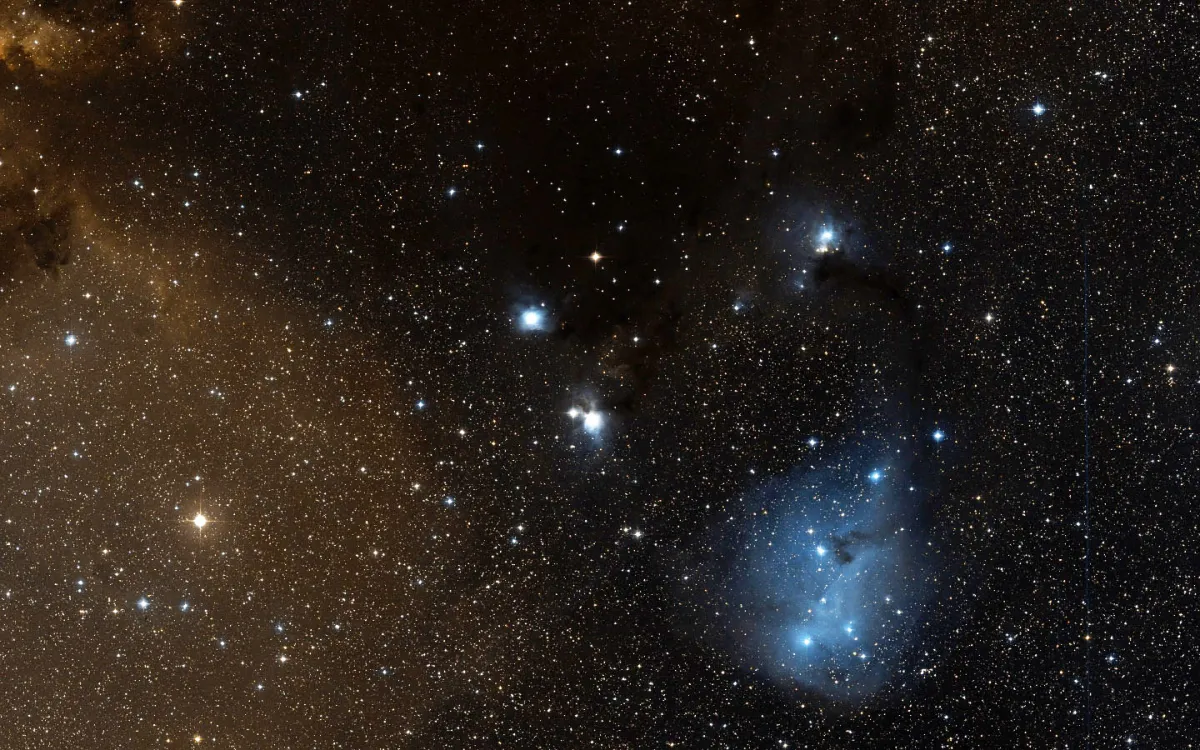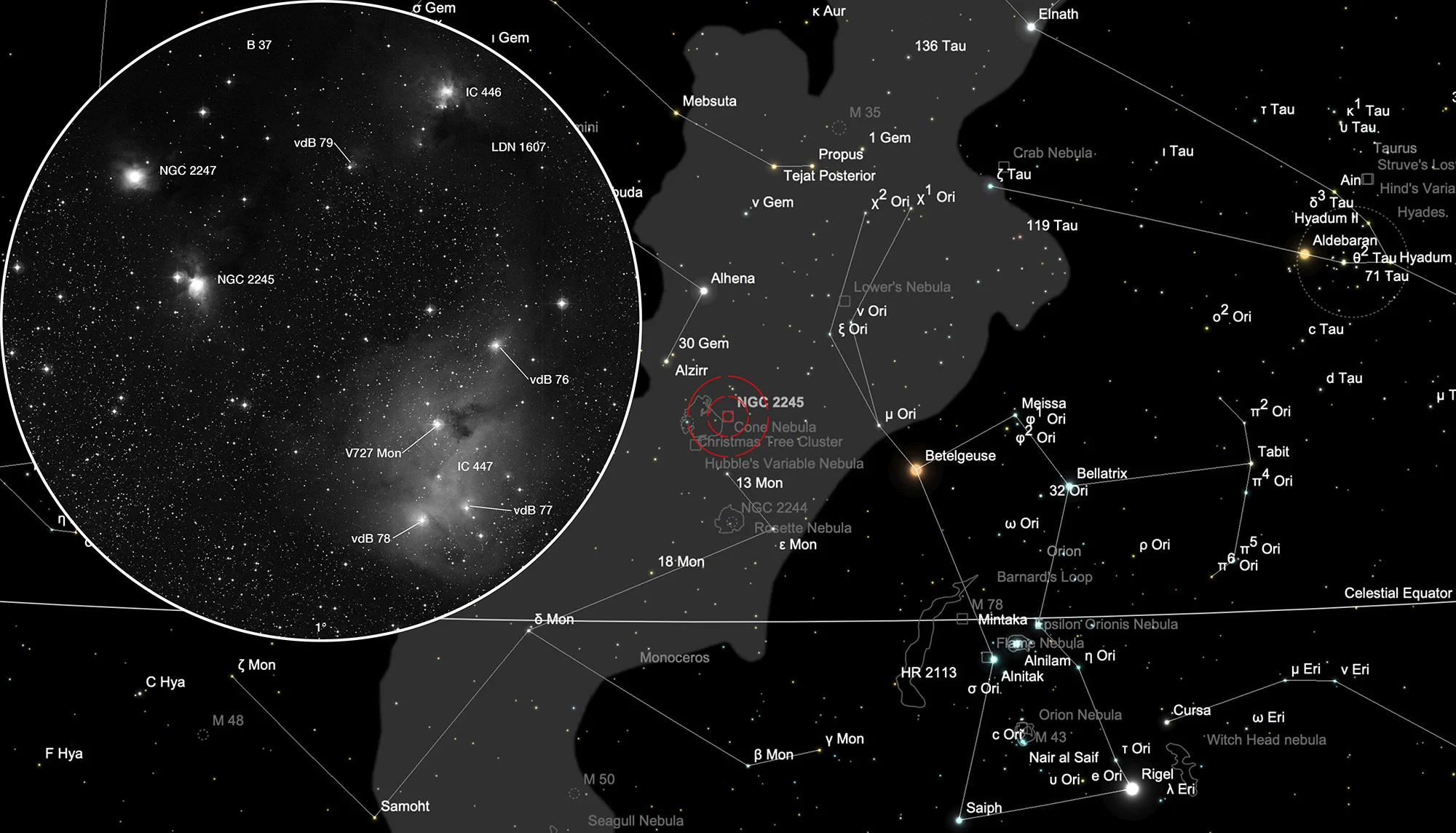Dreyer's Nebula (IC 447)

History
On 18 January 1784 William Herschel noticed a «pretty bright milky [nebula] like a star with an electrical brush» while this part of the sky was drifting through the field of view of his 18.7 inch reflecting telescope. [463] He most likely referred to an electrical brush discharge or a Saint Elmo's fire — as it was about half a century before the invention of electrical motors. The nebula was cataloged as IV 3 which later became NGC 2245 in Dreyer's New General Catalogue. [196, 313]
The discovery of NGC 2247 is credited to the Irish astronomer R. J. Mitchell, an assistent of William Parsons, the 3rd Earl of Rosse. He discovered the nebula on 14 February 1857 using the giant 72 inch reflector «Leviathan» at Birr Castle. Dreyer gives the following description: «Nebulous star in extremely faint, extremely large nebulosity, north following IV 3 [NGC 2245]» [196, 313]
The American astronomer Edward Emerson Barnard exposed photographic plates of this region on 11 October 1888 using a 12 inch refractor and again on 21st and 24 January 1894 using the 6 inch Willard lens. He published his discovery in Astronomy and Astro-Physics on March 1894 describing: «I found a very large, weak, diffused nebulosity some half a degree south of the nebula NGC 2245. This was mixed up with several considerable stars. I also found a 10 mag nebulous star about half a degree north preceeding 2245.» [472] These discoveries were added 1895 by Dreyer as IC 446 and IC 447 by his Index Catalogue [314] For some reasons both nebula were also added 1910 in Dreyer's Second Index Catalogue as IC 2167 (= IC 446) and IC 2169 (= IC 447) with slightly different coordinates. [277, 315] In 1919 Barnard published a catalogue of 182 dark nebulae from which B 37, B 38 and B 39 are located within that area. [239]
The Canadian astronomer Sidney van den Bergh identified the reflection nebulae vdB 76, vdB 77, vdB 78 and vdB 79 on the photo plates of the Palomar Observatory Sky Survey (POSS) in his 1966 Study of Reflection Nebulae. [255]
IC 447 is also sometimes known as Dreyer's Nebula, although the reason for this naming is unclear. He published his famous New General Catalogue in the same year as Barnard discovered that nebula though.
Physical Properties
All these discovered bright and nebulae belong to a large molecular cloud, the Monoceros R1 (Mon R1) Complex which mean distance from Earth is around 716 pc. It is an active starforming region and hosts many young stars and Herbig-Haro objects, bright patches of nebulosity associated with newborn stars. [474, 475]
| Name | RA | Dec | Type | Dim | MD | Dreyer Description | Identification, Remarks |
|---|---|---|---|---|---|---|---|
| NGC 2245 | 06 32 41.2 | +10 09 24 | RN | 5 × 4 | 0.770 | pL, com, mbN sf alm *, * 7·8 nf | WH IV 3; h 393; GC 1425; LBN 904 |
| NGC 2247 | 06 33 05.1 | +10 19 18 | RN | 6 × 6 | 0.770 | Neb * in eF, eL neby, nf IV 3 | LBN 901 |
| IC 446 | 06 31 06.0 | +10 27 35 | RN+* | 5 × 4 | 0.760 | Neb * 10m | IC 2167; LBN 898; CED 77 |
| IC 447 | 06 31 04.0 | +09 52 00 | RN | 25 × 20 | 0.750 | vF, eeL, dif | IC 2169; LBN 903 |
| IC 2167 | 06 31 06.0 | +10 27 35 | dup | 5 × 4 | 0.760 | * 9.5 in F, L neb | IC 446; LBN 898; CED 77 |
| IC 2169 | 06 31 04.0 | +09 52 00 | dup | 25 × 20 | 0.750 | F, L, dif, sev st 9-10 inv | IC 447; LBN 903 |
Finder Chart
The nebula complex is located in the constellation Monoceros, approximately 2.5° west of 15 Monocerotis. The best season for observation is from October until March.
